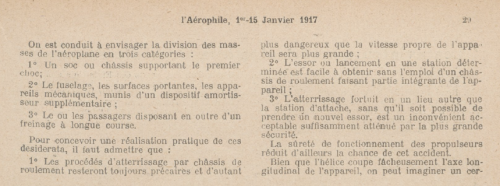- Joined
- 11 March 2006
- Messages
- 8,618
- Reaction score
- 3,762
Interesting find, hesham !
Perhaps one of our native french speakers could help here : The design reminds me to
Gerald Herricks Convertaplanes ( http://www.secretprojects.co.uk/forum/index.php/topic,19837.msg202197.html#msg202197)
and in the text I found "..l'immobilisation en vol", which I would translate as "fixed during flight".
And the 3-view somehow suggests, too, that during cruising flight the rotor should be stopped
and work as a fixed wing.
Perhaps one of our native french speakers could help here : The design reminds me to
Gerald Herricks Convertaplanes ( http://www.secretprojects.co.uk/forum/index.php/topic,19837.msg202197.html#msg202197)
and in the text I found "..l'immobilisation en vol", which I would translate as "fixed during flight".
And the 3-view somehow suggests, too, that during cruising flight the rotor should be stopped
and work as a fixed wing.


































